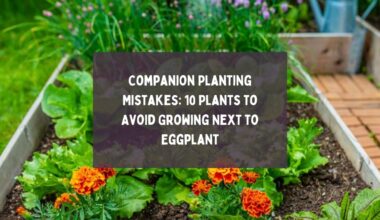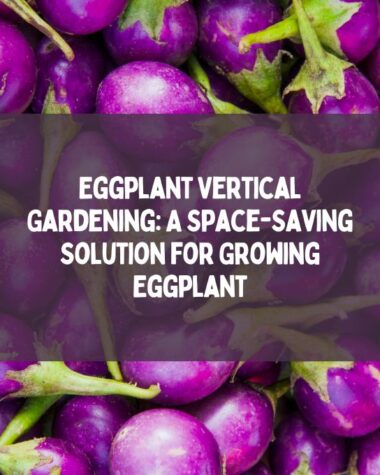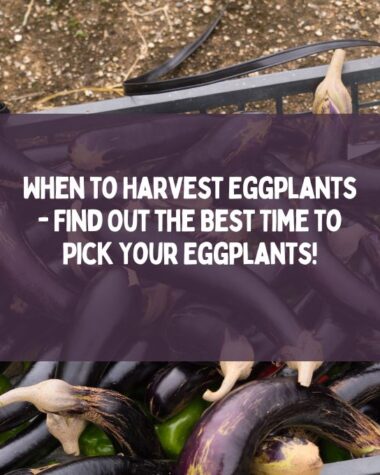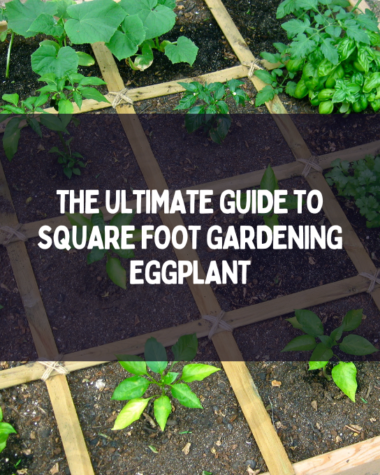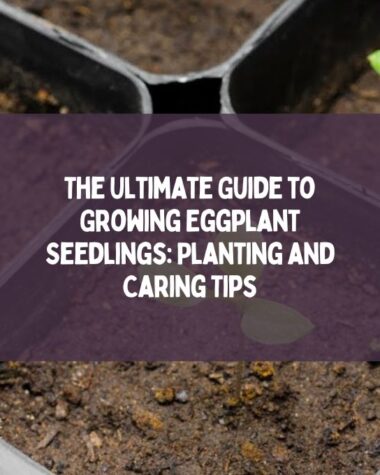Eggplants are versatile and delicious vegetables that can be enjoyed in a variety of dishes. However, these plants require proper care and support to ensure healthy growth and abundant harvests.
One essential aspect of eggplant cultivation is providing stakes for support. In this article, we will delve into the reasons why staking eggplants is crucial, the various methods of staking available, and the benefits it offers gardeners.
Let’s explore the world of eggplant staking and discover how it can enhance your gardening experience.
The Need for Staking Eggplants
Understanding Eggplant Growth Habits
Eggplants are vigorous growers that can reach significant heights, often exceeding 3 feet. Their branching nature and heavy fruiting can put strain on the main stem, leading to bending, breaking, or toppling over. Staking provides a reliable support system, preventing these issues and promoting vertical growth.
Related Reading
- How Proper Eggplant Spacing Can Maximize Your Harvest?
- The Incredible Benefits of Providing Aubergine Plant Support
- Will Eggplant Grow in Shade? An Overview
- White Shades Of Eggplant: Exploring the Versatility of White Eggplant
- Eggplant Water Requirements: How Much Water Do Eggplants Need?
Encouraging Proper Air Circulation
Eggplants are susceptible to fungal diseases and pests, especially when the foliage remains damp for extended periods. Staking allows for better air circulation around the plant, reducing the risk of fungal infections and improving overall plant health.
Enhancing Sunlight Exposure
Eggplants thrive in full sun, and proper staking helps position the plants optimally to receive maximum sunlight. Improved sun exposure aids in fruit development, ensuring better flavor and quality.
Types of Stakes
1. Wooden Stakes For Support
Wooden stakes are a popular and cost-effective choice for staking eggplants. They provide sturdy support and are readily available at garden centers. Ideally, choose stakes that are at least 4 to 6 feet tall and 1 to 2 inches in diameter to accommodate the growth of the plant.
2. Bamboo Stakes: Sustainable Choice for Gardeners
Bamboo stakes are lightweight, durable, and easily available. They are a sustainable option, as bamboo is a fast-growing renewable resource. Like wooden stakes, bamboo stakes should be at least 4 to 6 feet tall and approximately 1 inch in diameter.
3. Metal Stakes: The Ultimate Support System
Metal stakes, such as galvanized steel or rebar, offer exceptional strength and durability. They can withstand heavy fruit loads and strong winds. Metal stakes are often driven into the ground, providing a secure support system for the eggplants.
Several Staking Methods For Eggplants
There are several methods for staking eggplants, depending on the specific needs and preferences of gardeners:
- Single Stake Method: In this method, a single stake is inserted next to the main stem of the eggplant. The plant is gently tied to the stake using soft garden twine or fabric strips at regular intervals as it grows.
- Double Stake Method: Two stakes are placed on either side of the main stem to provide extra stability and support. This method is particularly useful for larger varieties or areas prone to strong wind.
- Cage or Trellis Method: This method involves placing a cage or trellis around the eggplant plant. The cage or trellis provides support for the plant as it grows and prevents sprawling. It also simplifies the process of harvesting and maintenance.
Benefits of Staking Eggplants
Prevention of Stem Breakage and Toppling
The primary benefit of staking eggplants is preventing the main stem from bending, breaking, or toppling under the weight of the plant and its fruits. This ensures that the plant remains upright, reducing the risk of damage and maintaining optimal health.
Enhanced Fruit Quality
Staked eggplants experience improved air circulation, which reduces the likelihood of fungal infections and other diseases. Furthermore, adequate sunlight exposure promotes fruit development, resulting in higher yields and better-quality produce.
Easier Harvesting and Maintenance
Staked eggplants are more accessible, making it easier to harvest ripe fruits and perform maintenance tasks such as pruning, watering, and pest control. The orderly arrangement of the plants simplifies the overall management of the garden.
Space Optimization
Staked eggplants take up less horizontal space in the garden. This is particularly beneficial for gardeners with limited space or those who wish to grow multiple plants in a confined area. Staking allows for vertical growth, making efficient use of available space.
Related Reading
- Exploring the Sweet Success Cucumber: A Guide to its Unique Flavor and Benefits
- The Vibrant Charm of Orange Pumpkins: Exploring Their Symbolism and Culinary Delights
- Can Rabbits Eat Zucchini? Why Or Why Not?
- How to Get Started with Gardening?
- When to Feed Tomato Plants: A Comprehensive Guide
- Can Dogs Eat Carrots? A Complete Guide to Feeding Carrots to Your Furry Friend
Conclusion
Staking eggplants is a crucial practice that ensures the health, growth, and productivity of these popular vegetable plants. By providing necessary support, staking helps prevent stem breakage, promotes proper air circulation, enhances sunlight exposure, and facilitates easier maintenance and harvesting.
Whether using wooden, bamboo, or metal stakes and employing the single stake, double stake, or cage/trellis methods, gardeners can enjoy the numerous benefits of staking eggplants.
Embrace this practice and watch your eggplants flourish, yielding bountiful harvests for your culinary delights.

